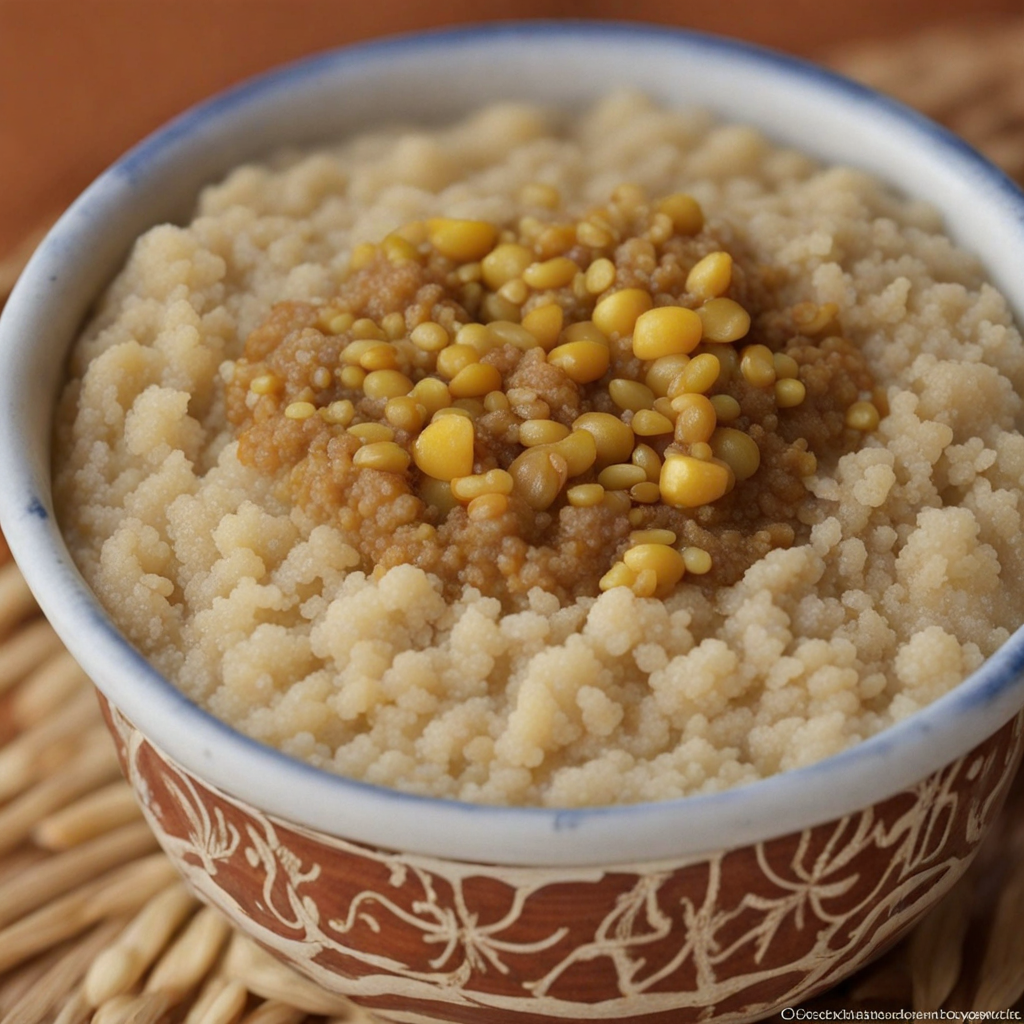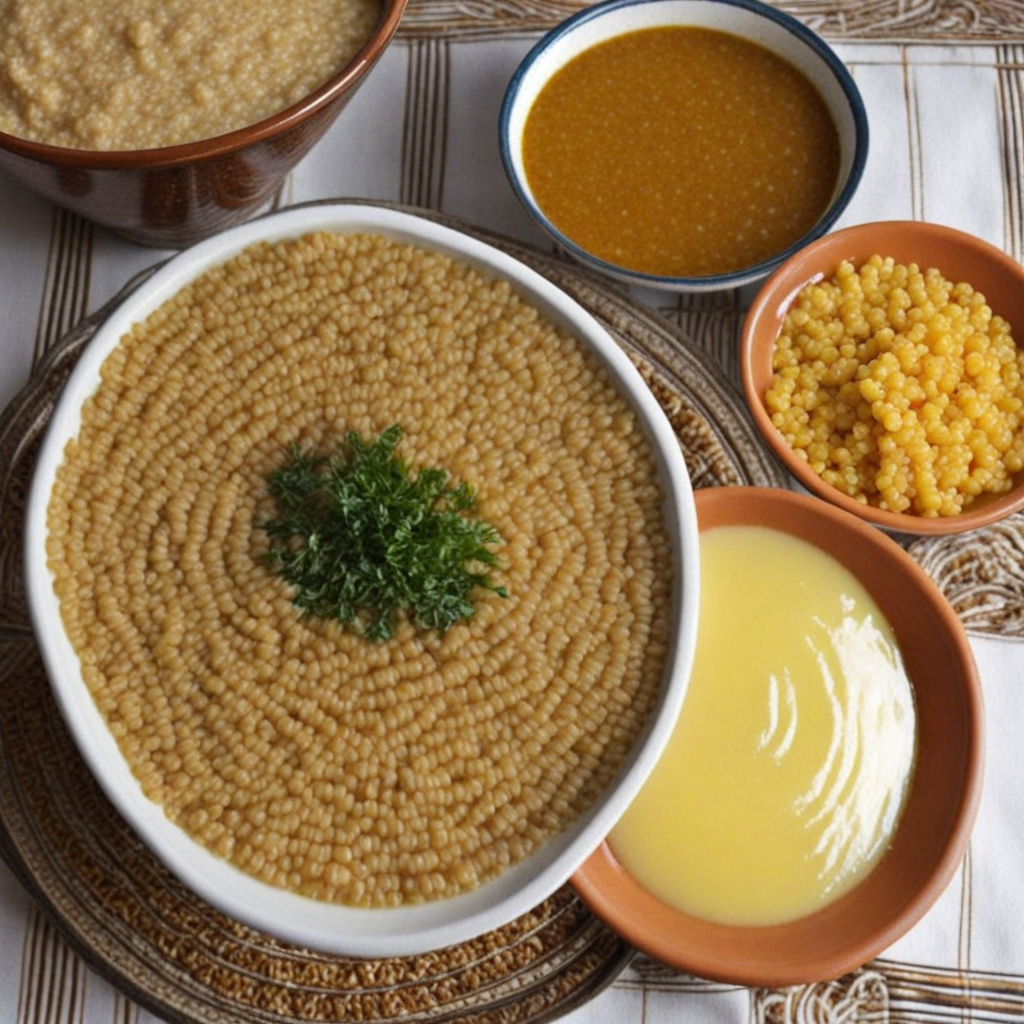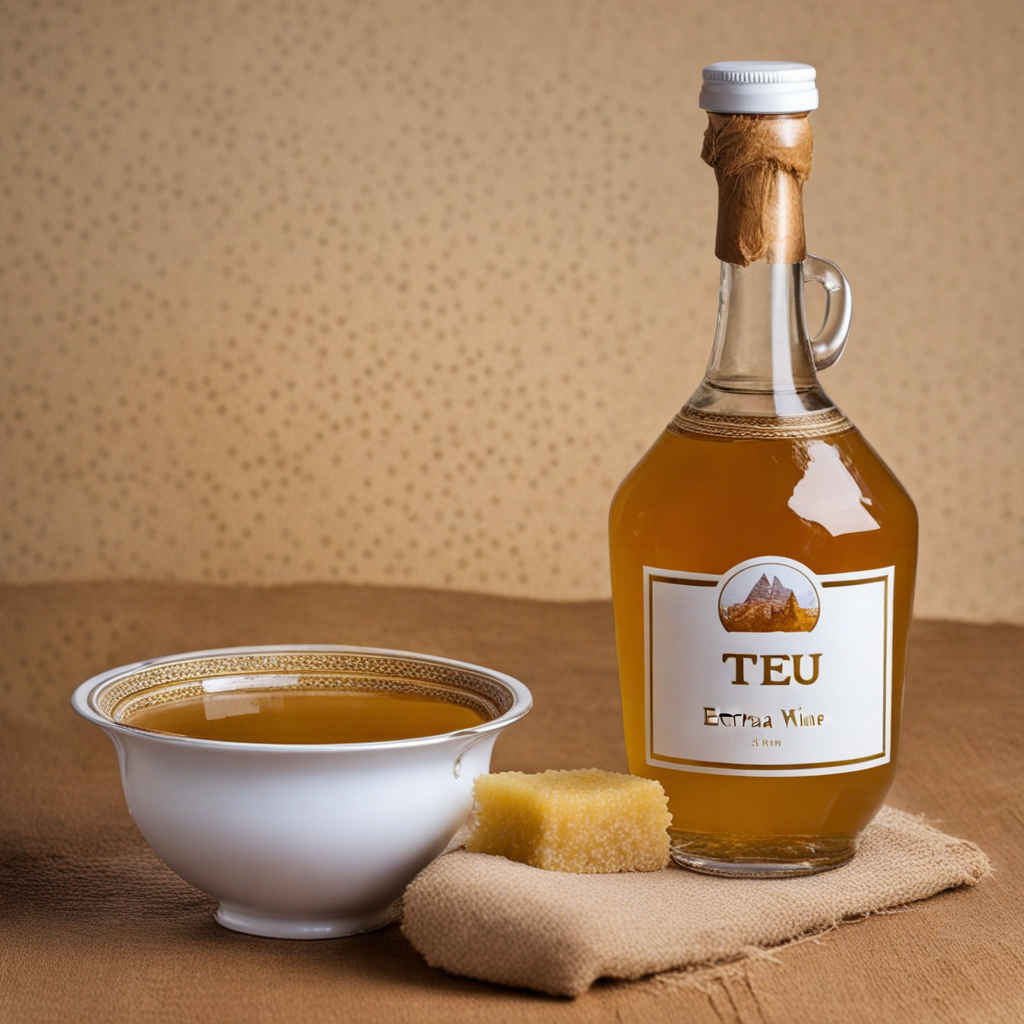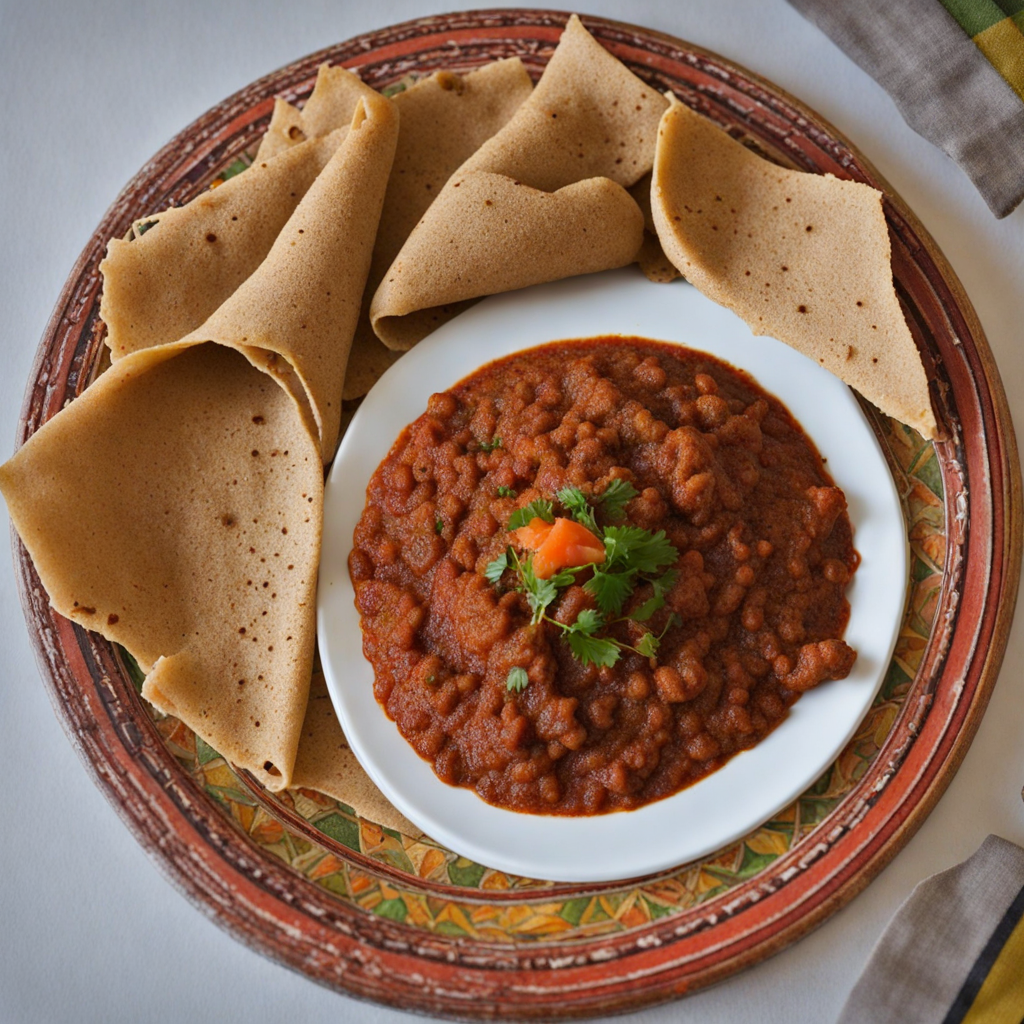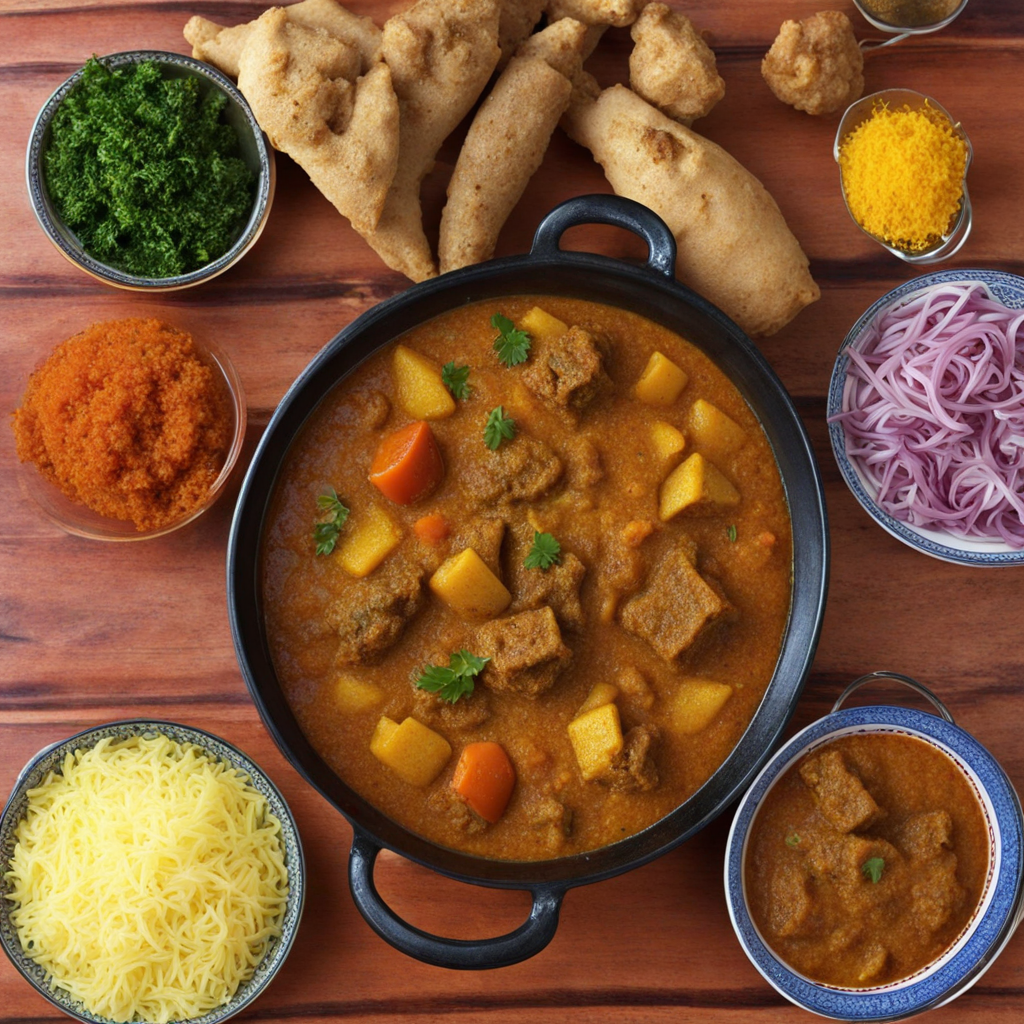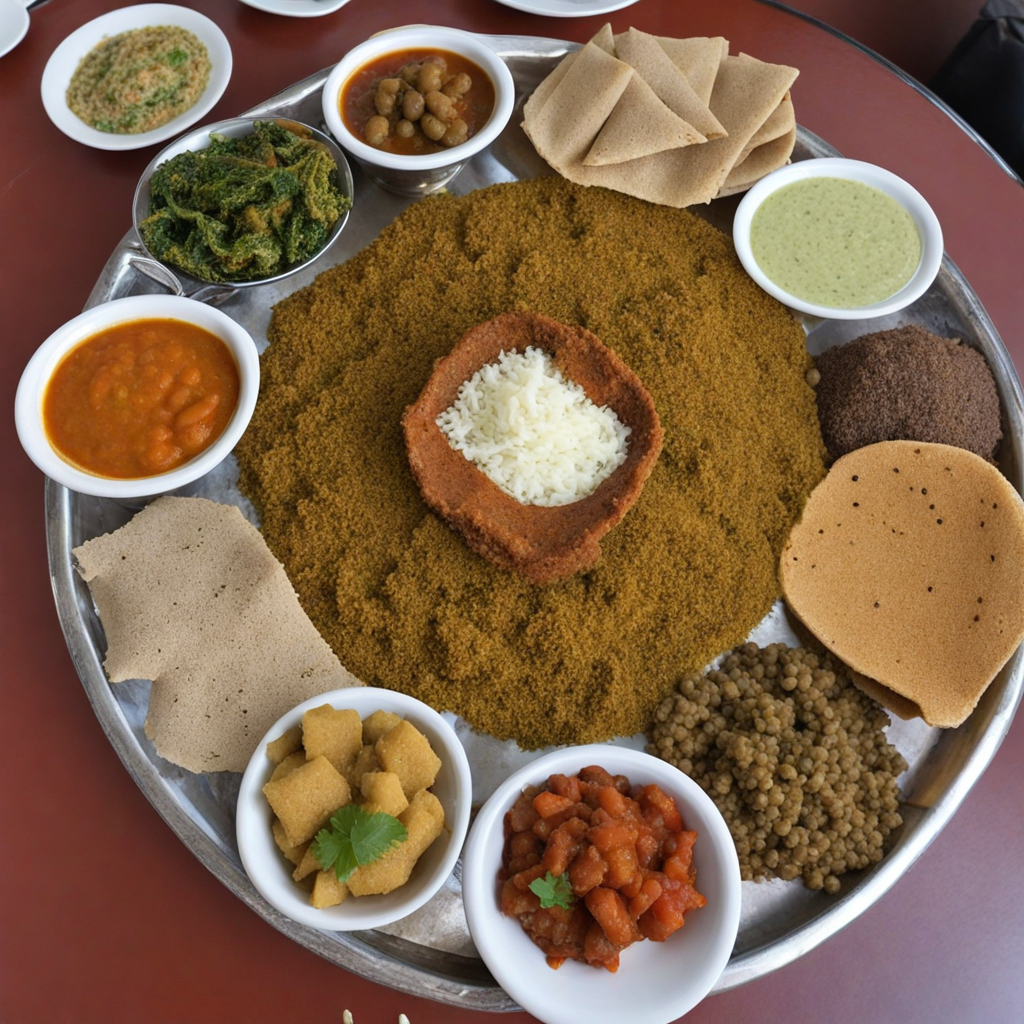Ga'at
Ga'at is a traditional Eritrean dish that embodies the rich culinary heritage of the region. This unique dish is made primarily from ground sorghum or barley, which is cooked into a soft, porridge-like consistency. The texture is smooth and slightly sticky, making it perfect for scooping with the hands, a common practice in Eritrean dining. The flavor is mild yet earthy, serving as a perfect canvas for various toppings and accompaniments, enhancing its taste profile and offering a delightful experience for the palate. Typically, Ga'at is enjoyed with a variety of flavorful stews, known as 'siga' or 'shiro,' which are often made from lentils, chickpeas, or meat cooked with an array of spices. The rich, savory flavors of these stews complement the subtle taste of the Ga'at, creating a harmonious balance. Many also enjoy it with a drizzle of spicy sauce or a sprinkle of berbere, a quintessential Eritrean spice blend that adds warmth and complexity to the dish, making each bite a delightful adventure. Ga'at is not just a meal; it's a communal experience that brings people together. Traditionally, it is served on a large platter, allowing diners to gather around and share in the enjoyment of the food. The act of eating Ga'at with one's hands fosters a sense of connection and intimacy among those gathered, making it more than just nourishment—it's a celebration of culture and togetherness. Every bite of Ga'at tells a story of Eritrean heritage, inviting newcomers to explore the depths of its flavors and the warmth of its traditions.
How It Became This Dish
The History of ጋዓት (Ga'at) in Eritrean Cuisine Eritrea, a nation nestled in the Horn of Africa, is home to a rich tapestry of cultures, languages, and culinary traditions. Among its many traditional foods, ጋዓት (Ga'at) holds a special place in the hearts and stomachs of its people. This dish, often translated as "porridge" or "gruel," embodies not only the essence of Eritrean culinary practices but also the deep cultural significance that food holds in the lives of its citizens. Origins of Ga'at The origins of Ga'at can be traced back centuries, intertwining with the agricultural practices and dietary habits of the Eritrean people. Eritrea is predominantly an agrarian society, where staple grains such as sorghum, barley, and teff have been cultivated for millennia. These grains have historically been the foundation of the Eritrean diet, and Ga'at emerged as a practical and nourishing way to utilize these local crops. The preparation of Ga'at is straightforward yet varies by region and individual preference. Traditionally, the grains are ground into a fine flour, which is then mixed with water to create a thick porridge. The simplicity of this dish speaks volumes about the resourcefulness of Eritrean cuisine, where minimal ingredients are transformed into a fulfilling meal. Cultural Significance In Eritrea, food transcends mere sustenance; it is a vital part of social and cultural identity. Ga'at, in particular, is more than just a dish; it often serves as a symbol of hospitality and communal sharing. In many Eritrean households, Ga'at is a staple food, frequently consumed for breakfast or as an accompaniment to other dishes. The preparation and consumption of Ga'at are often communal activities. Families gather to prepare the porridge, sometimes involving children in the process to instill a sense of tradition and belonging. This communal spirit is further reflected in celebrations and gatherings, where Ga'at is often served to guests, reinforcing bonds within communities. Moreover, Ga'at holds significance during times of hardship. In rural areas, where food security can be precarious, Ga'at offers a reliable source of nourishment. It is a dish that can be easily adapted to incorporate whatever ingredients are available, whether it be spices, vegetables, or meats. This flexibility makes Ga'at a beacon of comfort and sustenance in challenging times. Development Over Time As Eritrea transitioned through various historical epochs, the preparation and perception of Ga'at evolved. The Italian colonization in the late 19th and early 20th centuries introduced new culinary influences to the region. While Italian cuisine did not directly alter the fundamental nature of Ga'at, it did create a culinary landscape in which Eritrean dishes began to incorporate diverse flavors and cooking techniques. Post-independence in 1993 marked another pivotal period in the history of Ga'at. Eritrea's struggle for independence from Ethiopia had instilled a strong sense of national pride and identity. As Eritreans sought to reclaim and celebrate their cultural heritage, traditional foods like Ga'at were re-emphasized. The dish became a symbol of resilience, representing a return to roots and the importance of national identity in the face of adversity. In contemporary Eritrea, Ga'at continues to thrive, adapting to the modern culinary landscape while retaining its traditional essence. With the rise of globalization, urbanization, and migration, Ga'at is not only enjoyed in Eritrea but has also found a place in Eritrean diaspora communities around the world. Eritrean restaurants and food festivals showcase Ga'at alongside other traditional dishes, allowing for cross-cultural exchanges and the preservation of Eritrean culinary heritage. In urban areas, variations of Ga'at have emerged, influenced by the availability of ingredients and the blending of culinary traditions. Some urban dwellers may incorporate dairy products, such as milk or yogurt, enriching the porridge's texture and flavor. Others may experiment with sweet versions of Ga'at, adding honey or fruits to create a delightful breakfast option. Nutritional Value Ga'at's nutritional profile is another reason for its enduring popularity. Made primarily from whole grains, Ga'at is rich in carbohydrates, providing essential energy for daily activities. It is also a source of dietary fiber, promoting digestive health. Depending on the grains used—such as teff, which is high in protein, iron, and calcium—Ga'at can be a highly nutritious meal catering to various dietary needs. Furthermore, Ga'at is often served with an array of accompaniments, such as spicy stews (known as zighni), vegetables, or even lentils. These pairings not only enhance the flavor profile of the dish but also contribute to a balanced diet, ensuring that families receive a variety of nutrients. Conclusion The journey of ጋዓት (Ga'at) in Eritrean cuisine is a reflection of the country's rich history, cultural significance, and adaptability. As a dish that links generations, Ga'at exemplifies the resilience and creativity of the Eritrean people. Its evolution over time—from a simple porridge to a beloved staple—highlights the importance of food in shaping cultural identity and fostering community bonds. In a world that is rapidly changing, Ga'at remains a testament to the enduring power of tradition and the shared experiences that food can create. As Eritreans continue to celebrate their culinary heritage, Ga'at will undoubtedly remain at the heart of their kitchens, symbolizing nourishment, hospitality, and the spirit of togetherness that defines Eritrean culture.
You may like
Discover local flavors from Eritrea


